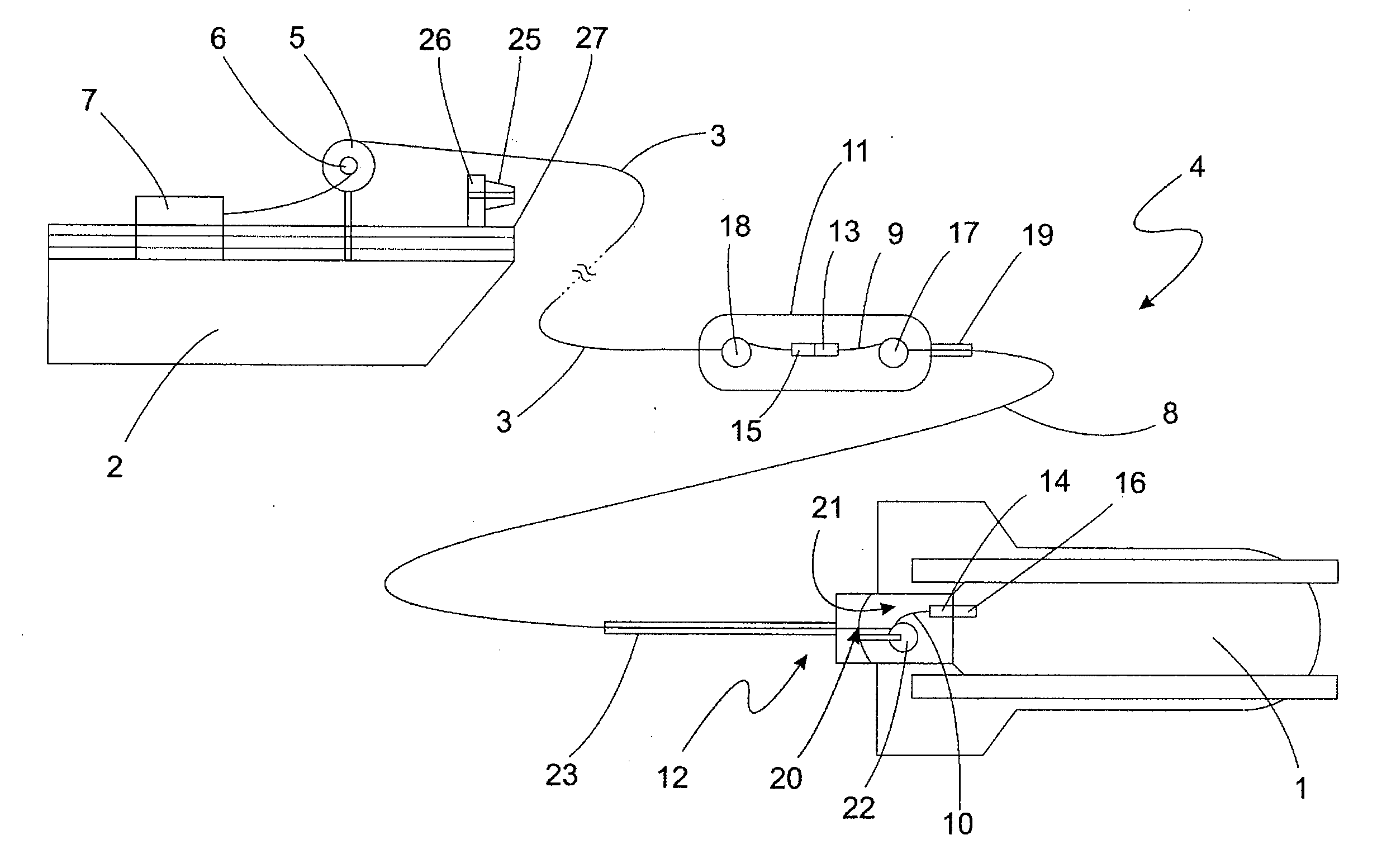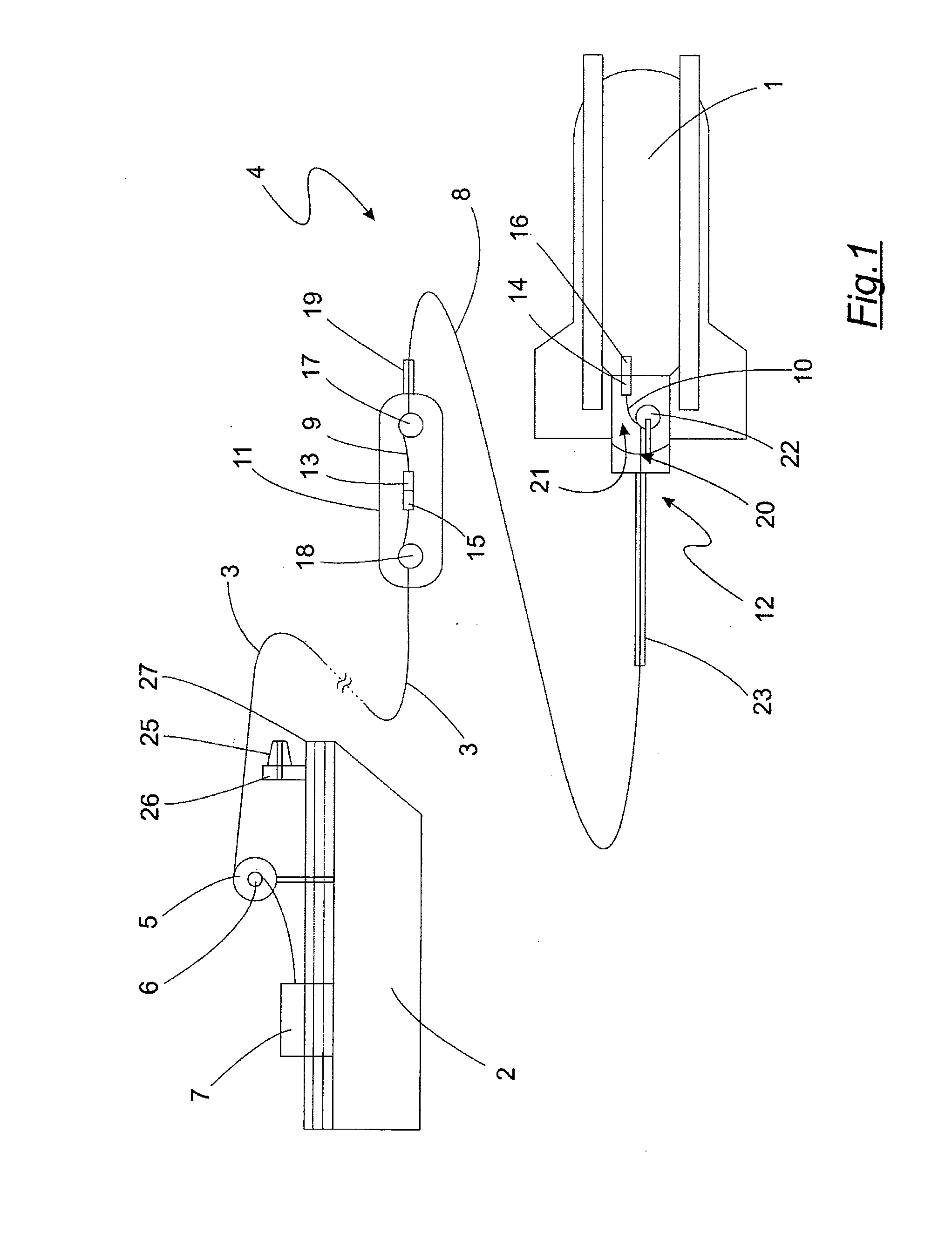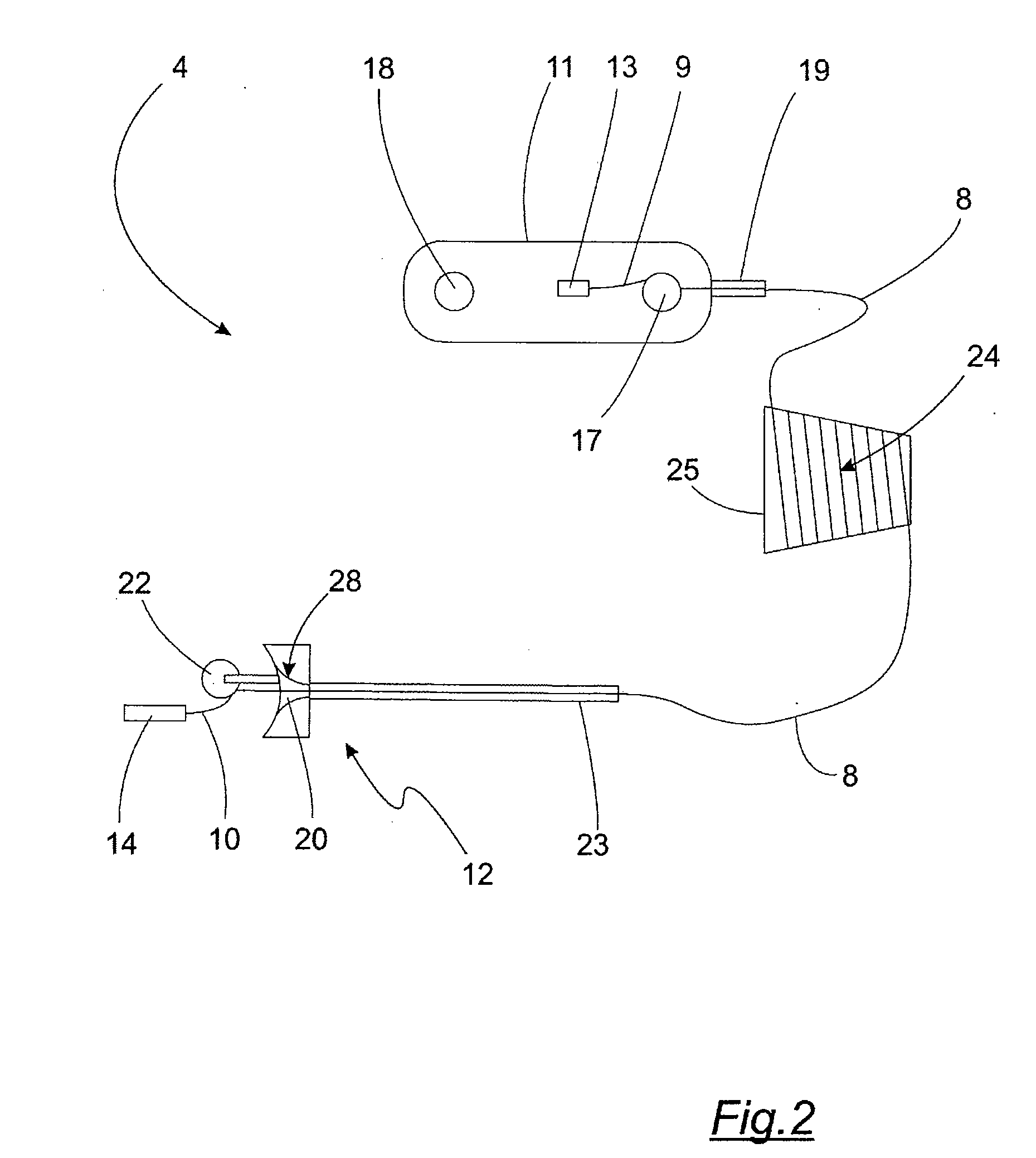Unmanned underwater vehicle and device for connection of an optical waveguide cable to an unmanned underwater vehicle
a technology for underwater vehicles and optical waveguide cables, which is applied to underwater equipment, special-purpose vessels, instruments, etc., can solve the problems of underwater vehicles being lost to achieve the desired clearance success, and the abovementioned first variant of underwater vehicles being lost during mine hunting missions. , the cost of production of the connecting device according to the invention is further reduced, and the effect of preventing damage to the connecting cabl
- Summary
- Abstract
- Description
- Claims
- Application Information
AI Technical Summary
Benefits of technology
Problems solved by technology
Method used
Image
Examples
Embodiment Construction
[0039]FIG. 1 schematically illustrates an unmanned underwater vehicle 1 which is controlled from a carrier platform 2 via a cable connection. The carrier platform 2 in the exemplary embodiment is a surface vessel. Alternatively, the carrier platform is an underwater vehicle, for example a submarine, a swimming platform, for example a vehicle without propulsion, such as a tender, a transportable container or any form of mobile or stationary platform which, for example, is located on land in a coastal area, or is fixed to the seabed, for example in order to make it possible to rid waterways, in particular seaways, affected by mining, of mines. The underwater vehicle 1 is a mine hunting drone which can be equipped with an explosive charge for mine clearance missions, or with various sensors for mine detection.
[0040]The cable connection for controlling the underwater vehicle 1 consists of an optical waveguide swimming cable 3, which is connected to the underwater vehicle 1 by means of a...
PUM
 Login to View More
Login to View More Abstract
Description
Claims
Application Information
 Login to View More
Login to View More - R&D
- Intellectual Property
- Life Sciences
- Materials
- Tech Scout
- Unparalleled Data Quality
- Higher Quality Content
- 60% Fewer Hallucinations
Browse by: Latest US Patents, China's latest patents, Technical Efficacy Thesaurus, Application Domain, Technology Topic, Popular Technical Reports.
© 2025 PatSnap. All rights reserved.Legal|Privacy policy|Modern Slavery Act Transparency Statement|Sitemap|About US| Contact US: help@patsnap.com



